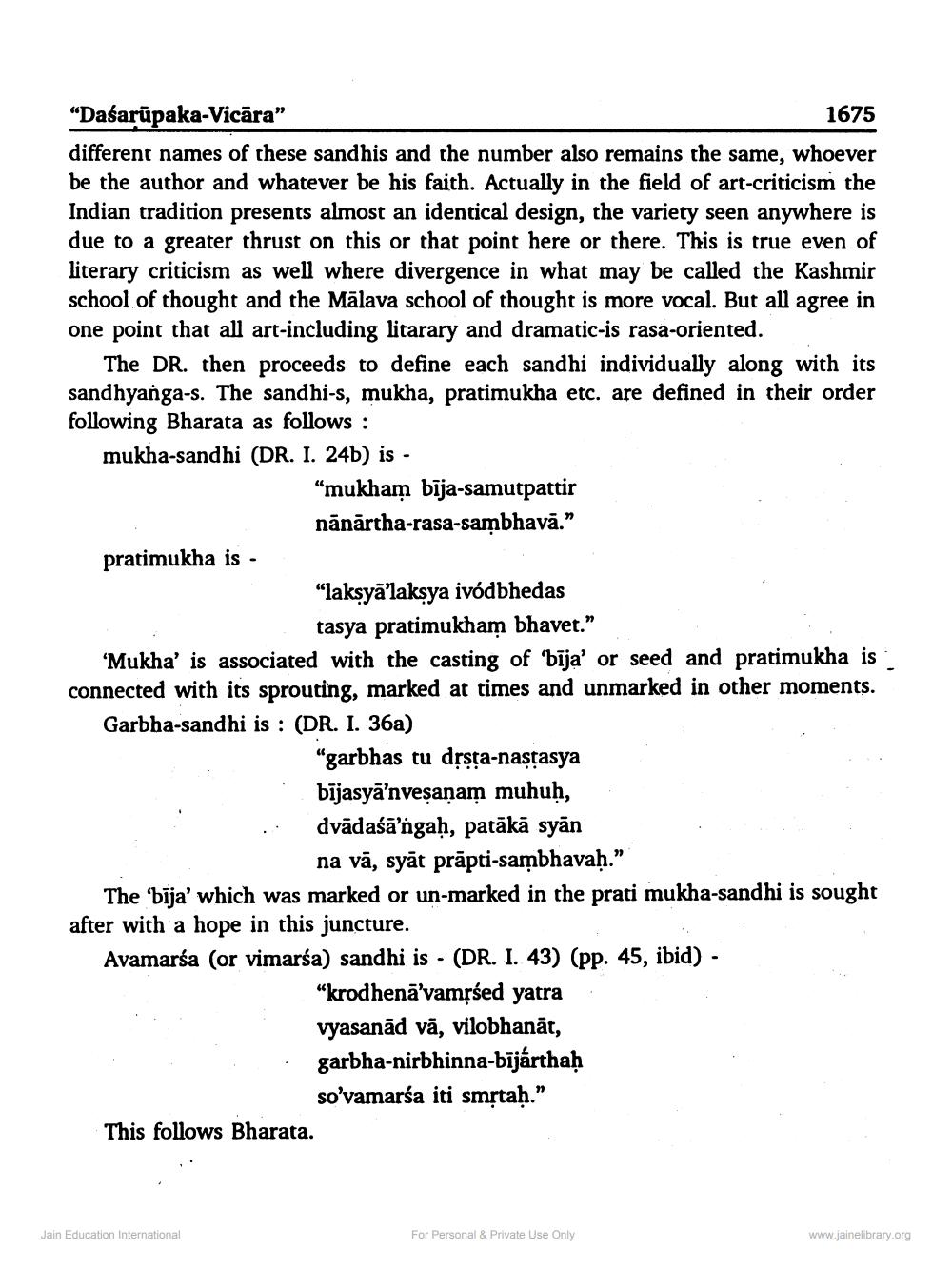________________
“Dasarūpaka-Vicāra"
1675 different names of these sandhis and the number also remains the same, whoever be the author and whatever be his faith. Actually in the field of art-criticism the Indian tradition presents almost an identical design, the variety seen anywhere is due to a greater thrust on this or that point here or there. This is true even of literary criticism as well where divergence in what may be called the Kashmir school of thought and the Mālava school of thought is more vocal. But all agree in one point that all art-including litarary and dramatic-is rasa-oriented.
The DR. then proceeds to define each sandhi individually along with its sandhyanga-s. The sandhi-s, mukha, pratimukha etc. are defined in their order following Bharata as follows: mukha-sandhi (DR. I. 24b) is -
"mukham bija-samutpattir
nānārtha-rasa-sambhavā." pratimukha is -
"laksyā'laksya ivódbhedas
tasya pratimukham bhavet.” 'Mukha' is associated with the casting of 'bīja' or seed and pratimukha is connected with its sprouting, marked at times and unmarked in other moments. Garbha-sandhi is : (DR. I. 36a)
"garbhas tu drsça-nastasya bījasyā’nveșanam muhuḥ, dvādaśā'ngah, patākā syān
na vā, syāt prāpti-sambhavaḥ.” The 'bīja' which was marked or un-marked in the prati mukha-sandhi is sought after with a hope in this juncture. Avamaría (or vimarśa) sandhi is - (DR. I. 43) (pp. 45, ibid) -
“krodhenā'vamțśed yatra. vyasanād vā, vilobhanāt, garbha-nirbhinna-bījárthaḥ
so'vamarśa iti smstaḥ." This follows Bharata.
Jain Education International
For Personal & Private Use Only
www.jainelibrary.org




